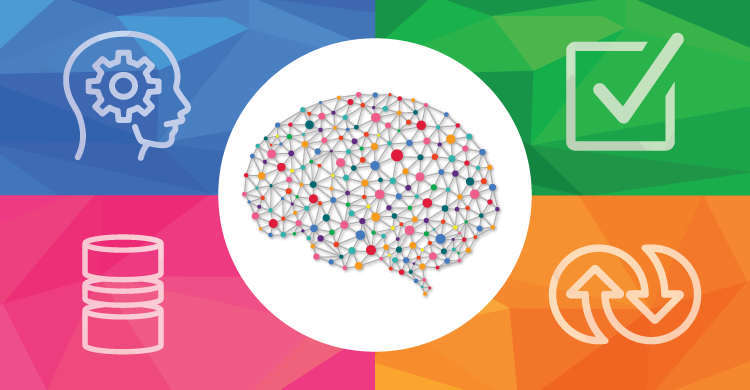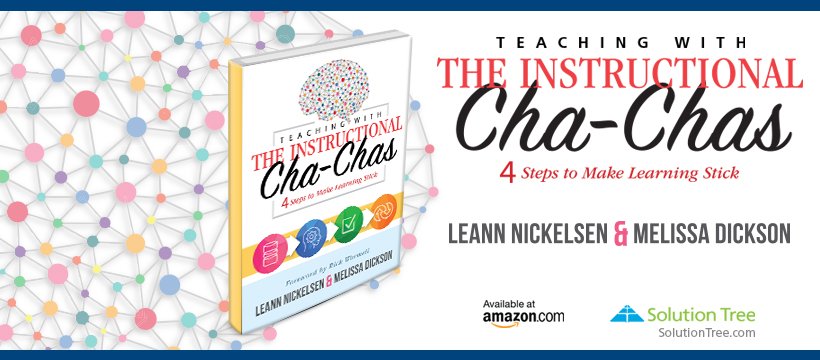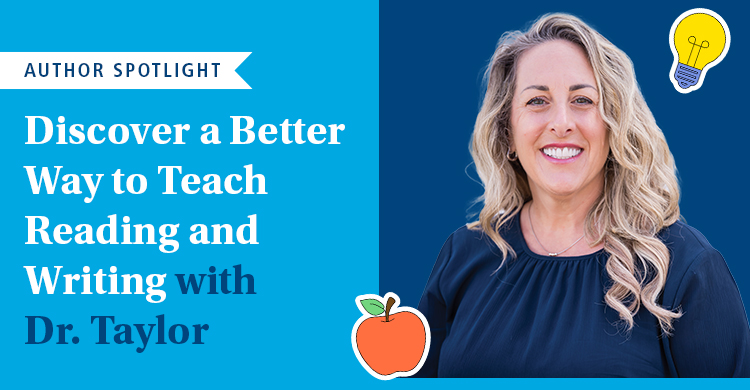Based on Teaching with the Instructional Cha-Chas: 4 Steps to Make Learning Stick
“My principal says that I need to meet the needs of all of my students in my classroom and that I need to differentiate. How on earth can I differentiate every day for every student? That seems impossible!”
Differentiation is not impossible. There are many quick and easy ways to differentiate your daily lessons (responding by adjusting instruction or instructional tools to meet the diverse needs of each student) so that your students can reach the daily Learning Target (which is one step toward the standard) faster.
The Big Picture of a Differentiated Daily Lesson Plan
In our book, Teaching with the Instructional Cha-Chas: 4 Steps to Make Learning Stick, we share four steps for effective instruction that can prevent and close gaps (“chunk, chew, check, and change”) and provide differentiation strategies for each step. When we plan how we will teach a lesson, we are thinking about how to incorporate the highest-impact tools and the best memory strategies so we can actively engage our students toward the Learning Target, the goal to reach by the end of the lesson. A few suggestions for each step are listed below in figure 1:
| Instructional Cha-Cha Step | Possible Ways to Differentiate | |
| Chunk
(Instruct) Teaching the content in a brain-friendly way so students receive the content. |
|
|
| Chew
(Learn) Provide a variety of ways for students to process the content just taught so it can get into memory systems. |
|
|
|
||
| Check (Examine)
Examine evidence from every student so you can determine how they are doing with their chew points (or formative assessments) to determine your next steps. |
|
|
| Change
(Differentiate) Determine the best change to make for the students. These changes can be for individual students, whole group, or small groups. |
|
|
As you can see, as a teacher plans for instruction and practice, he or she can easily provide differentiation strategies for the first three steps. The fourth step (change) cannot always be preplanned, since it is driven by the data gathered in step three (check). (Note: Preassessment data allows teachers to create differentiated activities for students ahead of time. We realize that teachers rarely preassess every single learning target, focusing instead on preassessing the most critical standards.)
Classroom Scenarios: Going Deeper
Let’s say that halfway through the lesson, the teacher does a Dry-Erase board check and realizes that the entire class demonstrates understanding. There is no need to have students continue to practice. Instead, the teacher accelerates the instruction by moving into the following day’s learning target or increases the rigor by providing enrichment.
If, on the other hand, halfway through the lesson, the checkpoint showed no student understanding, then it would be pointless to continue with the lesson. Instead, the teacher stops the students, makes a change, and reteaches the lesson in a different way, using a different strategy.
This type of change is considered a “right now” change, since the teacher can make the change immediately during instruction. Now, what if six students were struggling while the other students were on their way toward mastery of the Learning Target? We might invite those six students to the Learning Club table and reteach effectively and powerfully while the other students practiced the concept in a more challenging way.
Sometimes teachers collect classwork or daily exit tickets and find they need to make a “near future” change based on the data gathered. Let’s say that you gave an exit ticket at the end of today’s lesson that measured the daily learning target. After the students left, you sorted all 22 exit tickets into groups labeled “Got It,” “Need More Practice,” and “Did Not Get It Yet.” You discovered that six students got it, eleven students need more practice, and five students did not get it yet.
As the classroom teacher, it is your decision about what to do with your results. Some teachers might glance at them and continue their weekly path of learning, moving to the next day’s lesson regardless of the results of the exit ticket. But the effective teacher recognizes that there are decisions to be made to differentiate and ensure that all students are successful in the learning.
A Teacher’s Metacognition while Determining the Change (Differentiation)
Figure 2 is an example of a teacher’s reflection on the described exit ticket results. While the teacher’s reflection seems lengthy, this thought process takes only a few minutes once you have analyzed the exit ticket results. Taking this moment to reflect and make the right decisions to differentiate for your students will save you time in the long run.
| Decisions I Might Make to Tomorrow’s Lesson | My Thoughts |
| Add a question to the warmup. | The majority either needed more practice or didn’t know it. Since the warmup is for review, I don’t think this would be a good use of my time. But I could strategically group the Got It group of students with the Need More Practice group of students to do the warmup together while I pull the five who did not get it and model how to do the warmup (asking them to help me). An option! |
| Continue to review and reteach the concept using different tools throughout the rest of the week as I continue with the upcoming lessons. | Since today’s skill is the foundation for tomorrow’s lesson, the students really need to grasp this before I can go on.
I can’t really go on until they understand this piece of the content. Not an option this time! |
| Design and play a game to review the learning target and then check for mastery. | Although my students love games, most of them don’t have enough understanding of the learning target to be successful with the game. Not an option this time! |
| Reteach DIFFERENTLY from original teaching (small group, half the class, or whole group excluding the few who mastered it). | This is a possibility, but I would need the six students who got it to work independently on an anchor activity (which I will need to create). I would direct the eleven who still need more practice to practice the concept and check their work to give themselves feedback while I’m reteaching the five who need more of my time and feedback. This is an option! |
| Assign peer tutors. | I might be able to do this, although I would never put those who have it with those who don’t, because the gap is too large. Plus, I think those who don’t have it yet need me to instruct them. But I might be able to use those who have it as peer tutors to those who just need more practice. Unfortunately, a couple of those who have it don’t really have the social skills to be good peer tutors. Not an option this time! |
| Immediately regroup all the students heterogeneously and continue grade-level practice activities so they can help one another. | This might work, but I’m concerned that I’ll end up with one student doing all the work and another just sitting there doing nothing. To avoid “hogs and logs,” I would need to create very specific roles for each student, and I would need to spend time modeling what strong heterogeneous groups look like and sound like. Do my students know how to use “teacher talk” when working in groups? Will my students
who don’t yet know it learn with their peers, or do they need me? Not an option this time! |
| Regroup them homogeneously and design a tiered lesson. | I think this might be the best option for tomorrow. Although I’ll have to design three different activities at different complexity levels (but the same Learning Target), I’ll be able to provide more rigor for the students who have it, while providing practice opportunities for the students who need that. I’ll also be able to scaffold the lesson and provide more support for the students who didn’t get it. Everyone will stay focused on the learning target and will engage in an activity designed to meet their academic needs. This is the best option to meet all my students’ needs for this particular Learning Target. |
Figure 2: A teacher’s reflection on an exit ticket
Effective teachers don’t view differentiation as “one more thing to do” but rather see it as how we meet the needs of today’s diverse learners by designing effective, engaging lessons and not being afraid to change when the data shows it is necessary. The Instructional Cha-Chas, when done well, could double the speed of the learning in a classroom, effectively preventing and closing gaps with all your students. Now that is equity!
[author_bio id=”232″]
[author_bio id=”1955″]







